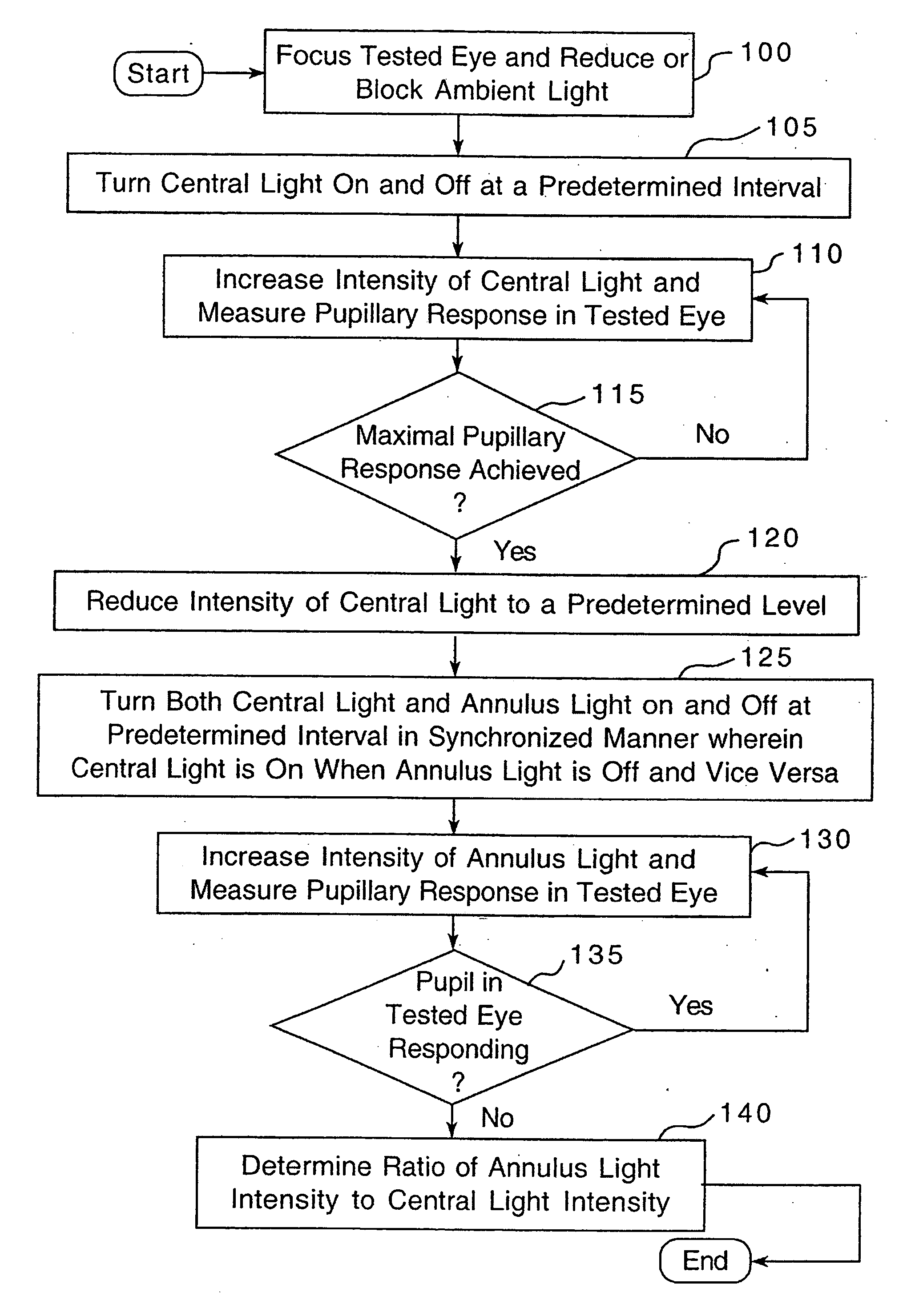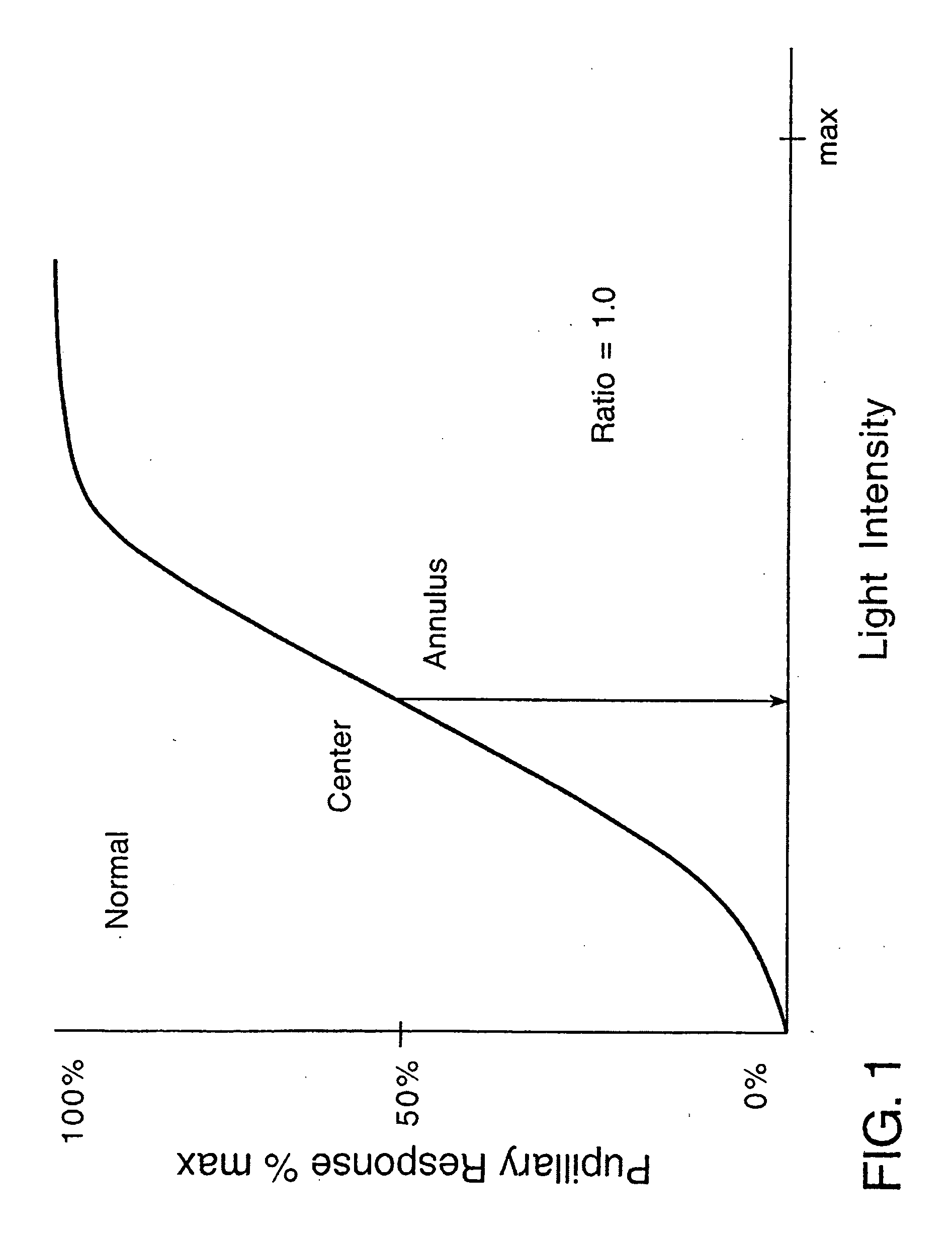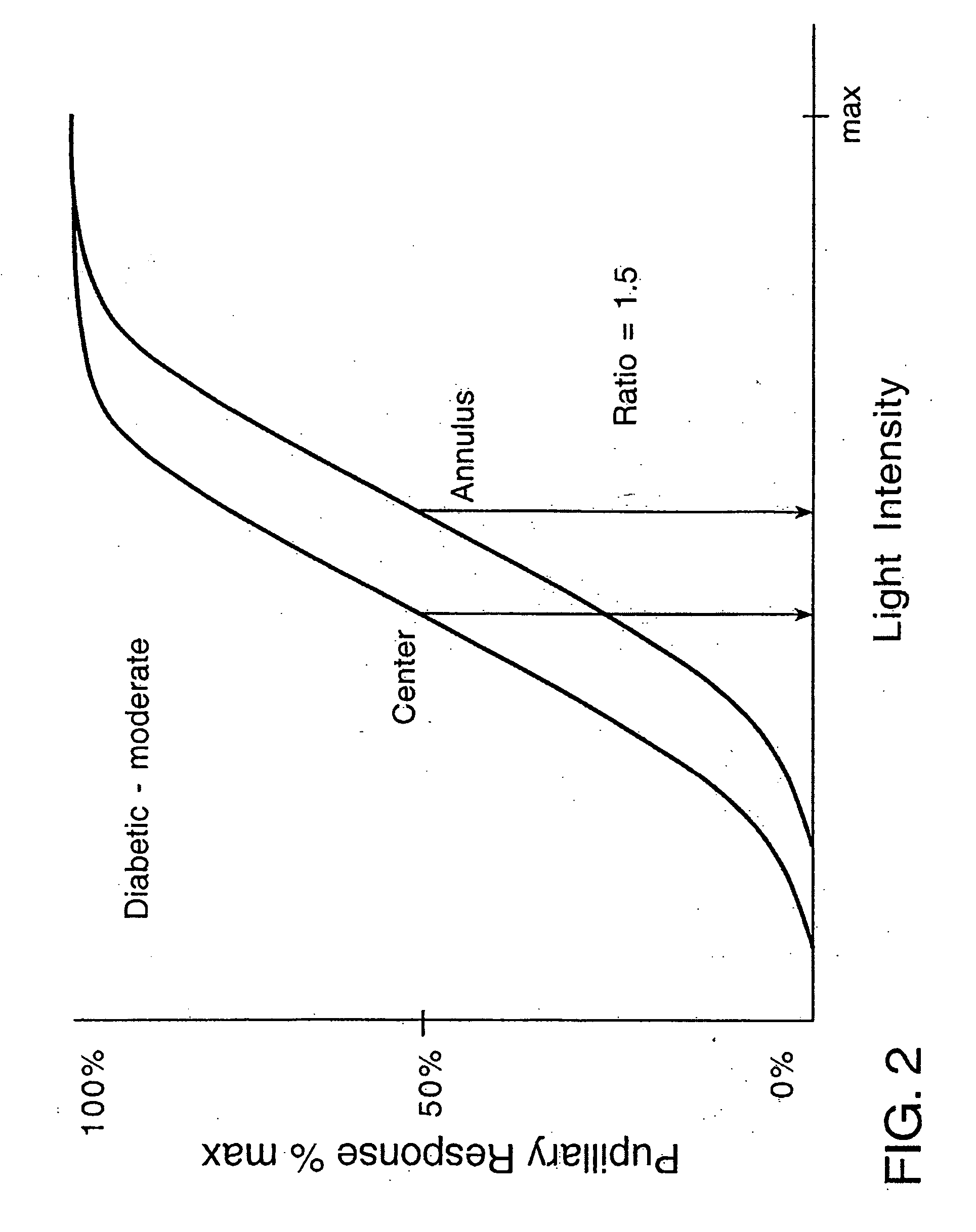Method and apparatus for screening for retinopathy
a technology of retinopathy and screening method, applied in the field of screening method and screening apparatus for retinopathy, can solve the problems of diabetes, vision loss, major health threat to diabetics, and failure to recognize and treat diabetic retinopathy
- Summary
- Abstract
- Description
- Claims
- Application Information
AI Technical Summary
Benefits of technology
Problems solved by technology
Method used
Image
Examples
Embodiment Construction
[0038] In healthy people having normal vision, different portions or areas of the retina, such as the central portion and the midperipheral portion, are generally equally sensitive to light. As a result, light of a particular intensity that is independently incident upon each of those different regions will produce generally the same pupillary response, i.e., the pupil will constrict to the same degree. In contrast, as discussed elsewhere herein, certain eye diseases cause reduced sensitivity to light in particular retinal areas as compared to others. For example, in diabetic retinopathy, the sensitivity of both the central and midperipheral portions of the retina to light are reduced, with the sensitivity of the midperipheral portion being reduced to a much greater degree.
[0039] As is known, the sensitivity of the retina to light may be observed by measuring the pupillary response to light. FIG. 1 is a graph of pupillary response, as a percentage of maximum pupil constriction, ver...
PUM
 Login to View More
Login to View More Abstract
Description
Claims
Application Information
 Login to View More
Login to View More - R&D
- Intellectual Property
- Life Sciences
- Materials
- Tech Scout
- Unparalleled Data Quality
- Higher Quality Content
- 60% Fewer Hallucinations
Browse by: Latest US Patents, China's latest patents, Technical Efficacy Thesaurus, Application Domain, Technology Topic, Popular Technical Reports.
© 2025 PatSnap. All rights reserved.Legal|Privacy policy|Modern Slavery Act Transparency Statement|Sitemap|About US| Contact US: help@patsnap.com



